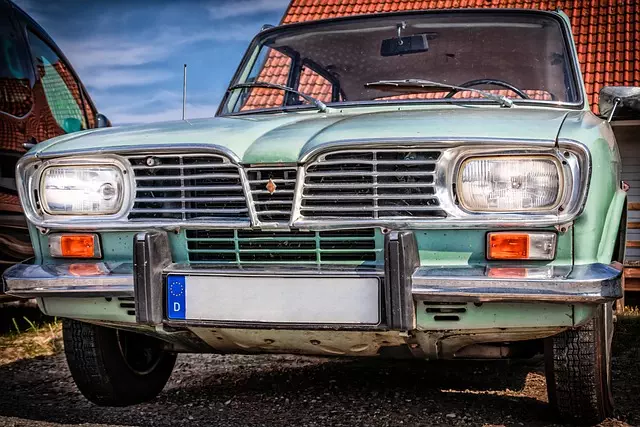White Maeng Da and White Bali Kratom extracts are distinct from each other, offering different alkaloid compositions and effects. White Maeng Da is known for its balanced energy that promotes focus and mental clarity without causing jitteriness, making it suitable for managing work-related stress or enhancing productivity throughout the day. It has a high content of mitraphylline, which contributes to these properties. White Bali, on the other hand, provides an uplifting and motivating experience with a higher concentration of mitraphylline compared to Maeng Da, offering a sense of well-being alongside its energetic benefits. This strain is milder and often used for its smooth energizing effect. The cultivation methods for both strains are unique, with White Maeng Da's late harvesting and optimal growing conditions enhancing its potency, while White Bali's specific microclimate influences its alkaloid composition. Both should be used responsibly, with recommended dosages starting at 1-2 grams and not exceeding 4-5 grams, depending on individual tolerance. The therapeutic potential of these extracts in herbal medicine is under investigation, with some studies suggesting benefits in pain management, mood enhancement, and productivity, though more research is needed to fully understand their effects. White Maeng Da vs White Bali Kratom extracts represent a complex debate in the realm of natural remedies that weighs traditional use against scientific evidence, highlighting the importance of careful dosing and ongoing research for informed decision-making.
exploring the nuanced effects and alkaloid profiles of kratom extracts, this article delves into a comprehensive comparison between White Maeng Da and White Bali, two powerful strains within the realm of herbal supplements. From their cultivation to their distinctive impacts on energy and focus, we will uncover the intricacies that set these extracts apart. As you navigate through the sections—covering their origins, comparative alkaloid analysis, experiential differences, dosage recommendations, and therapeutic potential—you’ll gain a well-rounded understanding of White Maeng Da vs. White Bali kratom extracts. Join us on this informative journey to appreciate the full spectrum of these botanical wonders in the context of herbal medicine.
- Unveiling the Potencies of White Maeng Da and White Bali Kratom Extracts: An Overview
- The Alkaloid Composition: A Comparative Analysis of White Maeng Da and White Bali
- Effects and Experiential Differences: Energy and Focus from White Maeng Da vs. White Bali
- Sourcing and Cultivation: Understanding the Origins of White Maeng Da and White Bali Kratom Extracts
- Dosage and Administration: Recommendations for Safe Usage of White Maeng Da and White Bali
- The Role of Kratom Extracts in Herbal Medicine: A Look at Therapeutic Potential and Research Findings
Unveiling the Potencies of White Maeng Da and White Bali Kratom Extracts: An Overview

White Maeng Da and White Bali Kratom extracts are distinct in their alkaloid profiles and effects, which users often explore for their unique properties. White Maeng Da, renowned for its potent balance of mitragynine and 7-hydroxymitragynine, is a popular choice among enthusiasts seeking a blend of stimulating and relaxing attributes. This strain is known to offer a robust energy boost without the typical jitters associated with caffeinated beverages, making it a preferred option for those looking to enhance focus and mental clarity throughout the day. Its reputation as a potent Kratom strain stems from its ability to deliver both invigorating and soothing effects, which can be particularly beneficial for individuals navigating the demands of demanding tasks or managing stress.
In contrast, White Bali Kratom extract is celebrated for its smooth and well-rounded effects that are slightly less intense but still powerful in their own right. The alkaloid content in White Bali is typically higher in mitraphylline compared to Maeng Da, which can contribute to a more balanced experience. This strain is often favored by those seeking an energetic lift without the overwhelming sensation that some may experience with other strains. Users report feeling uplifted and motivated, with a sense of well-being and calm that accompanies the increased energy levels. The balance of these effects makes White Bali a versatile choice for both daytime use and as a milder alternative for those sensitive to stronger strains like White Maeng Da.
The Alkaloid Composition: A Comparative Analysis of White Maeng Da and White Bali

Green Hulu Kratom Extract boasts a unique alkaloid composition that sets it apart from other kratom strains. Within its leaf structure, it contains a blend of mitragynine and 7-hydroxymitragynine, the primary alkaloids responsible for the plant’s effects. When comparing Green Hulu to its cousin strains, such as White Maeng Da and White Bali, the differences in alkaloid profiles become evident. White Maeng Da is known for its high concentration of mitraphylline, a unique alkaloid not found in significant amounts in other strains, which contributes to its potent and balanced effects. On the other hand, White Bali has a broader spectrum of alkaloids, including significant levels of mitragynine and 7-hydroxymitragynine, which are also present in Green Hulu but typically at different proportions. This variation leads to distinct experiences for users, with White Maeng Da often favored for its stimulating yet focused energy, while White Bali is known for its well-rounded and uplifting properties. The alkaloid composition of each strain contributes to their unique effects, making them suitable for different preferences and needs within the kratom community.
Effects and Experiential Differences: Energy and Focus from White Maeng Da vs. White Bali

When exploring the realm of Kratom extracts, the experiential differences between White Maeng Da and White Bali are notable. Both strains are revered for their energizing properties and ability to enhance focus, yet they each offer a distinct user experience. White Maeng Da is celebrated for its potent alkaloid content, which includes the stimulants mitragynine and 7-hydroxymitragynine. Users often report a sustained energy level and sharpened concentration with this strain, making it a popular choice for those seeking a balanced energetic effect without the jittery sensation that can accompany other stimulants.
On the other hand, White Bali is known for its uplifting and invigorating effects, which are also attributed to its rich alkaloid profile. This strain is characterized by a swift onset of energy and focus, often described as a quick surge of mental clarity and physical vitality. The experience with White Bali can be likened to a gentle yet effective stimulation that supports productivity without overwhelming the user. Both White Maeng Da and White Bali are versatile in their use, catering to individuals who require an energizing boost for daytime activities or for those looking to maintain a positive and alert mindset throughout their routine. Users may find that White Maeng Da provides a steadier, more enduring effect, while White Bali delivers an immediate and lively energy, each suitable for different occasions and preferences within the Kratom-using community.
Sourcing and Cultivation: Understanding the Origins of White Maeng Da and White Bali Kratom Extracts

The origins and cultivation practices behind White Maeng Da and White Bali Kratom extracts are distinct, contributing to their unique properties and the differences often observed in White Maeng Da vs White Bali. White Maeng Da, a strain derived from the Thai region, is known for its robust alkaloid profile due to the specific cultivation techniques employed. These techniques involve precise conditions such as soil quality, altitude, and humidity levels that are conducive to the plant’s optimal growth. The leaves used for White Maeng Da are typically harvested later than those of Red or Green Vein Kratom, which is believed to elevate its alkaloid content, particularly mitragynine and 7-hydroxymitragynine, the primary active compounds in Kratom. This late harvesting, coupled with a more labor-intensive drying process, results in a potent extract with potential benefits that are distinct from other strains.
On the other hand, White Bali Kratom is named for its geographical origin, the island of Bali in Indonesia. The cultivation of White Bali involves careful attention to the plant’s lifecycle, from seedling to mature tree. The environment in Bali offers a unique microclimate that influences the alkaloid composition and effect profile of the Kratom leaves. The soil and climate conditions on the island are conducive to producing Kratom with a higher mitragynine content compared to other strains, which is why White Bali is often noted for its energetic and uplifting effects. The extracts from White Bali are crafted to preserve these characteristics, making them sought after by individuals looking for the specific benefits that differentiate White Maeng Da from White Bali. Both strains offer unique experiences and are popular among Kratom enthusiasts, with their distinct origins and cultivation methods playing a significant role in their divergent effects.
Dosage and Administration: Recommendations for Safe Usage of White Maeng Da and White Bali

When considering the safe and effective usage of White Maeng Da and White Bali Kratom extracts, it is crucial to adhere to recommended dosage guidelines and proper administration methods. White Maeng Da, renowned for its invigorating and euphoric effects, typically requires a lower dosage range than some other strains due to its potency. Users often start with a modest dose of 1-2 grams, with the potential to increase incrementally up to 4 grams, based on individual tolerance and desired effects. It is important to assess one’s sensitivity and comfort level before considering any dosage adjustments.
Conversely, White Bali Kratom is known for its well-balanced alkaloid profile, which can offer a wide range of benefits including mood enhancement and energy support. The recommended starting point for White Bali is comparable to that of White Maeng Da, with users initiating at 1-2 grams and cautiously experimenting up to 4-5 grams if necessary. Both strains, White Maeng Da and White Bali, can be administered in various forms, including leaf, powder, capsules, or extracts. It is essential to purchase products from reputable sources to ensure the quality and safety of the Kratom consumed. Users should also be aware that individual body chemistry, metabolism, and personal sensitivity can influence the effects and necessary dosage, thus it is always recommended to start low and go slow when exploring the efficacy of these plant-based compounds. Additionally, it’s advisable to consult with a healthcare provider before integrating White Maeng Da or White Bali Kratom into one’s wellness routine, especially if other medications are being taken.
The Role of Kratom Extracts in Herbal Medicine: A Look at Therapeutic Potential and Research Findings

Kratom extracts, derived from the leaves of Mitragyna speciosa, have garnered attention in the realm of herbal medicine due to their diverse therapeutic potential. These potent concentrates contain higher levels of alkaloids compared to traditional kratom leaf preparations, which can amplify their effects. Among the most discussed and researched strains are White Maeng Da and White Bali, each with its unique profile and reported benefits. White Maeng Da, renowned for its balanced alkaloid content, is often sought after for its stimulating properties, which may aid in enhancing focus, energy levels, and mood elevation. On the other hand, White Bali kratom extract is celebrated for its uplifting and invigorating qualities, potentially contributing to a sense of well-being and vitality.
Research findings on these extracts have been mixed, with some studies suggesting potential in managing pain, improving mood, and increasing productivity, while others highlight the need for further investigation to fully understand their effects and safety profiles. The therapeutic potential of kratom extracts is an area of ongoing scientific interest, with preclinical research exploring their pharmacological actions and interactions within the body. As such, the use of these extracts in herbal medicine continues to be a subject of both fascination and caution, with advocates citing personal experiences and anecdotal evidence alongside scientists calling for more rigorous clinical trials to substantiate their claims. The role of kratom extracts in herbal medicine is thus complex and evolving, reflecting the intricate interplay between traditional knowledge, emerging scientific research, and regulatory considerations.
In conclusion, the exploration of Green Hulu Kratom extract, alongside White Maeng Da and White Bali, within the realm of herbal supplements has shed light on their unique alkaloid profiles and distinct effects. The comparative analysis between these strains, particularly White Maeng Da vs White Bali, highlights their varying energetic properties, with the former often associated with heightened focus and the latter providing a more balanced experience. Understanding the cultivation practices that shape their character is crucial for consumers seeking to harness their therapeutic potential responsibly. As evidenced by research findings, Kratom extracts, including Green Hulu, offer promising avenues within herbal medicine, warranting further scientific investigation. Consumers are advised to adhere to dosage recommendations and consult healthcare professionals when integrating these extracts into their wellness regimen, ensuring safe usage of Kratom products for their intended purposes.






